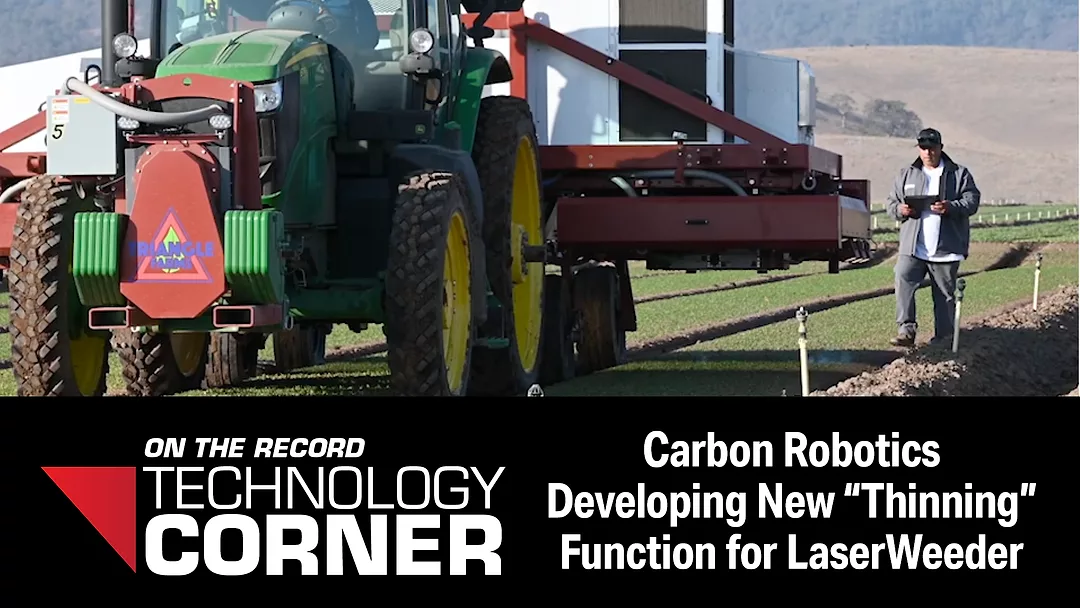Carbon Robotics’ LaserWeeder uses artificial intelligence and lasers to zap weeds in the field. We’ve featured it a few times on the program, check out PrecisionFarmingDealer.com for the nuts and bolts.
Today we’re catching up with Carbon Robotics founder and CEO Paul Mikesell for an update on how the machine’s performing in the field. Paul tells us, from an ROI perspective, LaserWeeder pays for itself within 3 years, with an 80% reduction in weed control bills — a number that comes from a couple different growers on the West Coast. And Mikesell says the technology is evolving. They’re working on a new function that would allow the LaserWeeder to thin an overseeded field.
“Thinning is a process in combination with over-seeding. Thinning is a process where you'll go in and kill some of those plants that are germinating but would cause space constraints. And that has been typically done today with either hand labor or some form of herbicide spray, which has the same issues. Cost, effectiveness, drift problems. In certain areas of the country, there's limits to the amount of nitrogen inputs you can add, and these herbicides all have some amount of that. So, thinning with the LaserWeeder turns out to be a really good fit, because we already can tell what's happening on the ground. We already have lasers to kill vegetable matter, kill plant matter, and so we had to upgrade our computer vision a little bit to be able to detect, not just the weeds, but the crops and the configuration of the crops and how close they are to each other so that we can do optimal spacing through a thinning pass. “
The thinning technology is in the development and testing phase. LaserWeeders are currently deployed primarily on the West Coast, but Mikesell says they’re working their way to the East Coast and Canada for 2024.







